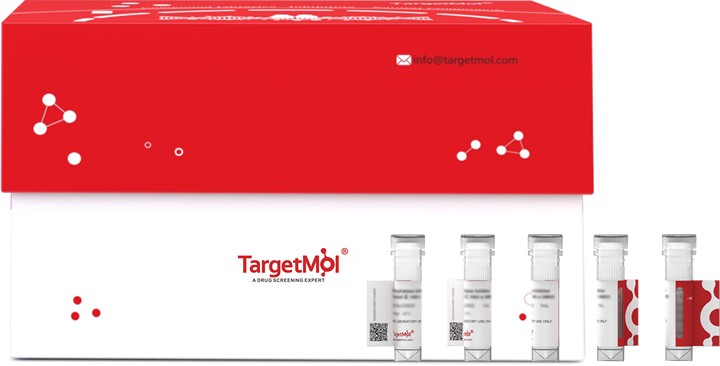Shopping Cart
Remove All Your shopping cart is currently empty
Your shopping cart is currently empty
RPB1 Protein, Drosophila melanogaster, Recombinant (His) is expressed in yeast with N-6xHis tag. The predicted molecular weight is 33.6 kDa and the accession number is P04052.

| Pack Size | Price | USA Warehouse | Global Warehouse | Quantity |
|---|---|---|---|---|
| 5 μg | $143 | 20 days | 20 days | |
| 10 μg | $238 | 20 days | 20 days | |
| 20 μg | $397 | 20 days | 20 days | |
| 50 μg | $597 | 20 days | 20 days | |
| 100 μg | $845 | 20 days | 20 days | |
| 200 μg | $1,190 | 20 days | 20 days | |
| 500 μg | $1,950 | 20 days | 20 days |
| Biological Activity | Activity has not been tested. It is theoretically active, but we cannot guarantee it. If you require protein activity, we recommend choosing the eukaryotic expression version first. |
| Description | RPB1 Protein, Drosophila melanogaster, Recombinant (His) is expressed in yeast with N-6xHis tag. The predicted molecular weight is 33.6 kDa and the accession number is P04052. |
| Species | Fruit fly |
| Expression System | P. pastoris (Yeast) |
| Tag | N-6xHis |
| Accession Number | P04052 |
| Synonyms | RpII215,RPB1,RNA polymerase II subunit B1,RNA polymerase II subunit A,Polr2A,DNA-directed RNA polymerase III largest subunit,DNA-directed RNA polymerase II subunit RPB1 |
| Amino Acid | YSPTSPNYTASSPGGASPNYSPSSPNYSPTSPLYASPRYASTTPNFNPQSTGYSPSSSGYSPTSPVYSPTVQFQSSPSFAGSGSNIYSPGNAYSPSSSNYSPNSPSYSPTSPSYSPSSPSYSPTSPCYSPTSPSYSPTSPNYTPVTPSYSPTSPNYSASPQYSPASPAYSQTGVKYSPTSPTYSPPSPSYDGSPGSPQYTPGSPQYSPASPKYSPTSPLYSPSSPQHSPSNQYSPTGSTYSATSPRYSPNMSIYSPSSTKYSPTSPTYTPTARNYSPTSPMYSPTAPSHYSPTSPAYSPSSPT |
| Construction | 1579-1881 aa |
| Protein Purity | > 90% as determined by SDS-PAGE. |
| Molecular Weight | 33.6 kDa (predicted) |
| Endotoxin | < 1.0 EU/μg of the protein as determined by the LAL method. |
| Formulation | Tris-based buffer, 50% glycerol |
| Reconstitution | A Certificate of Analysis (CoA) containing reconstitution instructions is included with the products. Please refer to the CoA for detailed information. |
| Stability & Storage | Lyophilized powders can be stably stored for over 12 months, while liquid products can be stored for 6-12 months at -80°C. For reconstituted protein solutions, the solution can be stored at -20°C to -80°C for at least 3 months. Please avoid multiple freeze-thaw cycles and store products in aliquots. |
| Shipping | In general, Lyophilized powders are shipping with blue ice. Solutions are shipping with dry ice. |
| Research Background | DNA-dependent RNA polymerase catalyzes the transcription of DNA into RNA using the four ribonucleoside triphosphates as substrates. Largest and catalytic component of RNA polymerase II which synthesizes mRNA precursors and many functional non-coding RNAs. Forms the polymerase active center together with the second largest subunit. Pol II is the central component of the basal RNA polymerase II transcription machinery. It is composed of mobile elements that move relative to each other. RPB1 is part of the core element with the central large cleft, the clamp element that moves to open and close the cleft and the jaws that are thought to grab the incoming DNA template. At the start of transcription, a single-stranded DNA template strand of the promoter is positioned within the central active site cleft of Pol II. A bridging helix emanates from RPB1 and crosses the cleft near the catalytic site and is thought to promote translocation of Pol II by acting as a ratchet that moves the RNA-DNA hybrid through the active site by switching from straight to bent conformations at each step of nucleotide addition. During transcription elongation, Pol II moves on the template as the transcript elongates. Elongation is influenced by the phosphorylation status of the C-terminal domain (CTD) of Pol II largest subunit (RPB1), which serves as a platform for assembly of factors that regulate transcription initiation, elongation, termination and mRNA processing. |
| Size | Quantity | Unit Price | Amount | Operation |
|---|

Copyright © 2015-2026 TargetMol Chemicals Inc. All Rights Reserved.